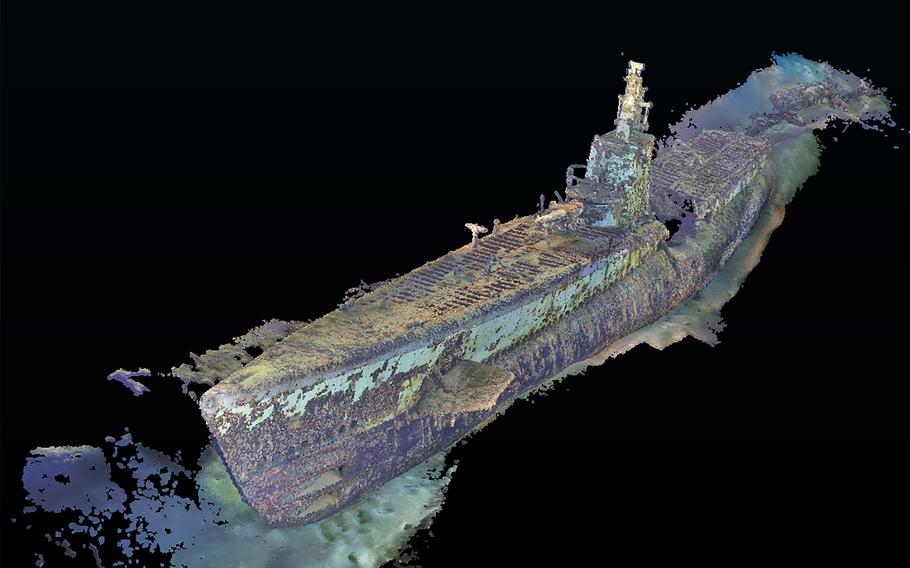
A multidimensional photogrammetry model created by The Lost 52 Project shows the wreck of the USS Harder off the coast of the Philippines, where it was recently found by the project. (The Lost 52 Project)
An organization on a quest to find and memorialize all 52 U.S. submarines lost during World War II has located the wreck of the USS Harder, a sub credited with sinking the most enemy warships during that conflict.
The Naval History and Heritage Command confirmed the wreck site using data collected and provided by Tim Taylor, the CEO of Tiburon Subsea and The Lost 52 Project, according to a command news release Thursday.
Taylor founded The Lost 52 after discovering his first lost U.S. submarine in 2010.
Taylor told NBC News on Wednesday that the Harder was found in the South China Sea near the coast of the Philippines.
“Resting at a depth of more than 3,000 feet, the vessel sits upright on her keel relatively intact except for the depth-charge damage aft of the conning tower,” the Heritage Command said in the news release.
“Submarines by their very design can be a challenge to identify, but the excellent state of preservation of the site and the quality of the data collected by The Lost 52 allowed for [the Heritage Command] to confirm the identity of the wreck as Harder.”
The Lost 52 project has previously located the wreckage sites of USS Grayback, USS Stickleback, USS R-12, USS S-26, USS S-28 and USS Grunion.
The USS Harder, nicknamed “Hit ‘em HARDER,” was renowned for its “particularly audacious attacks,” Samuel Cox, the retired Navy rear admiral who now directs the Heritage Command, said in the news release.
The sub completed six successful patrols in just over a year before it was last seen off the coast of Luzon, Philippines.
On its fifth patrol, regarded as its most successful, Harder sank three Japanese destroyers and heavily damaged two others, all over the span of only four days.
The sub’s frequent attacks “resulted in Adm. Ozawa’s Mobile Fleet departing Tawi-Tawi [Philippines] a day ahead of schedule,” the Heritage Command news release states. “The premature departure upset the Japanese battle plans and forced Ozawa to delay his carrier force in the Philippine Sea, contributing to the defeat suffered by the Japanese in the ensuing battle.”
In mid-August 1944, Harder and two other U.S. subs jousted with Japanese vessels over several days.
Japanese records state that on Aug. 24, 1944, Harder fired three torpedoes at escort ship CD-22, which it evaded, the Heritage Command said.
The escort ship then dropped a series of depth charges in Dasol Bay, Luzon. The fifth depth charge attack is believed to have sunk Harder, the Heritage Command said.
The Navy declared Harder, along with its crew of 79, to be presumed lost in January 1945.
The sub was awarded the Presidential Unit Citation for its first five patrols.
Harder’s commander, Samuel D. Dealey, received the Navy Cross four times while commanding and was posthumously awarded the Medal of Honor.